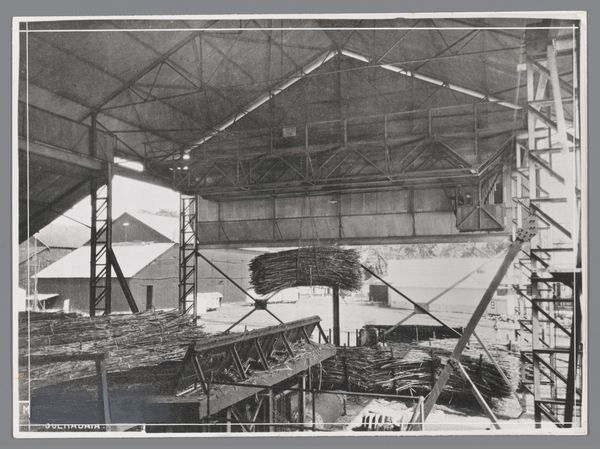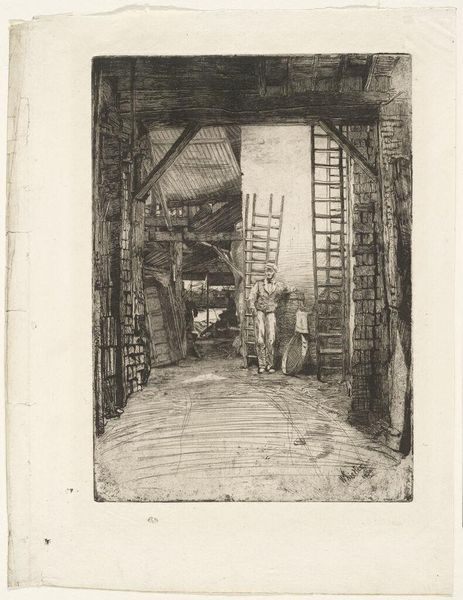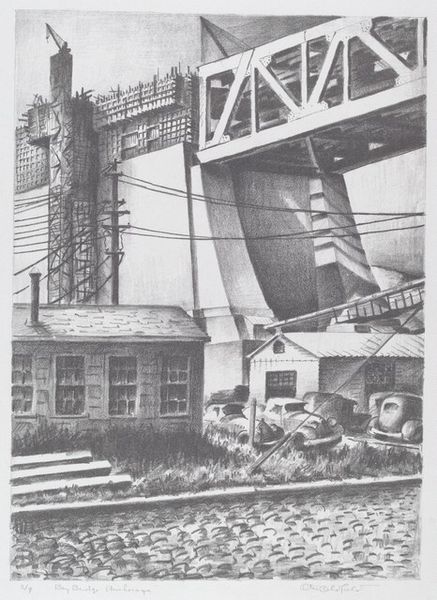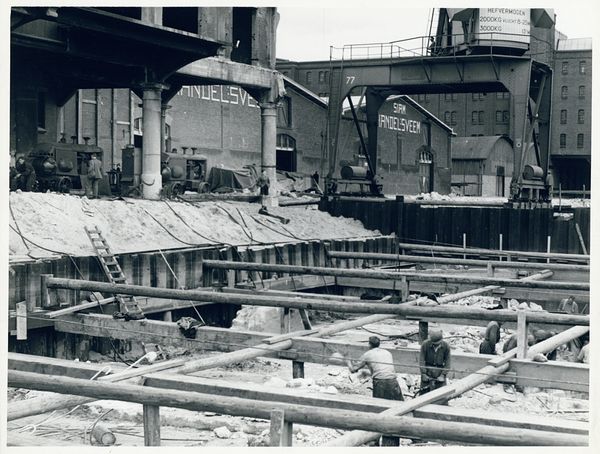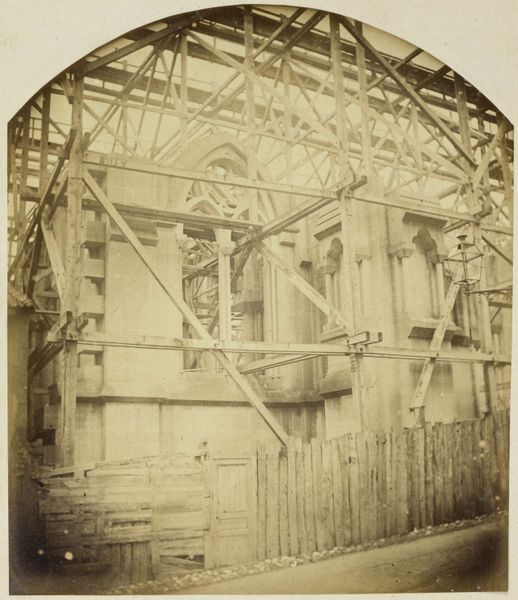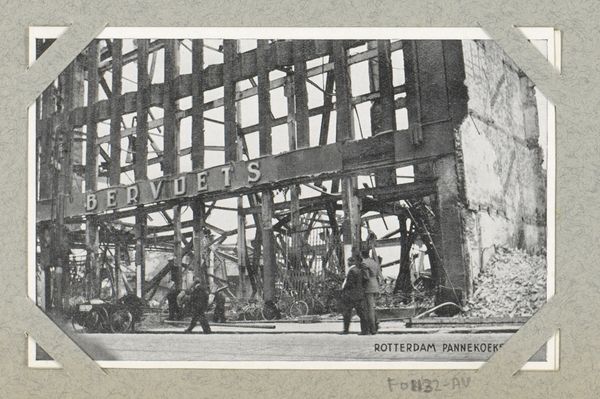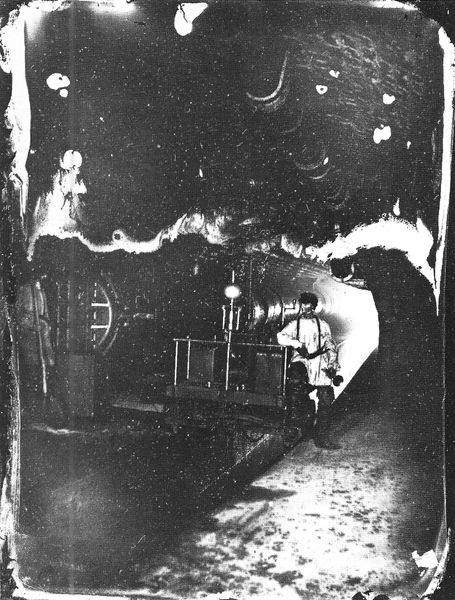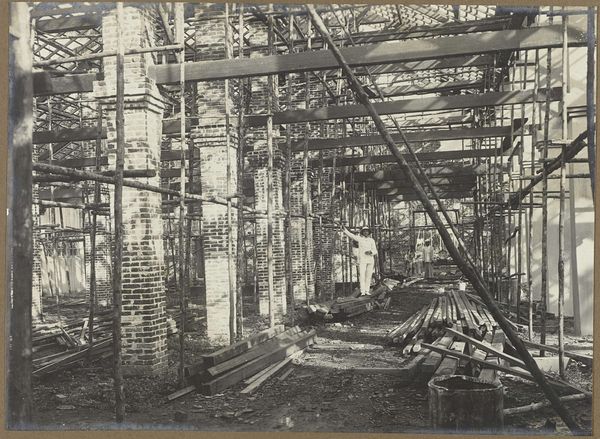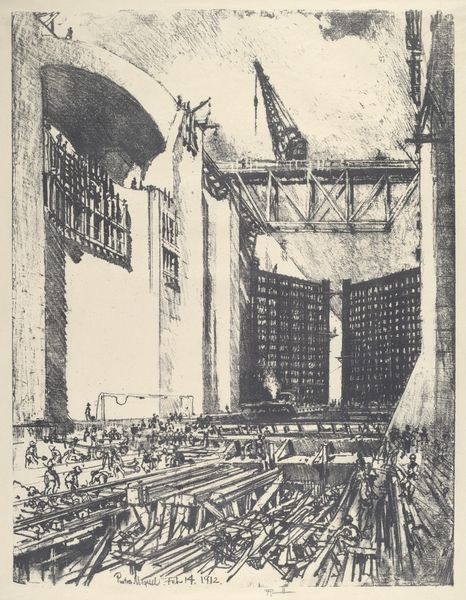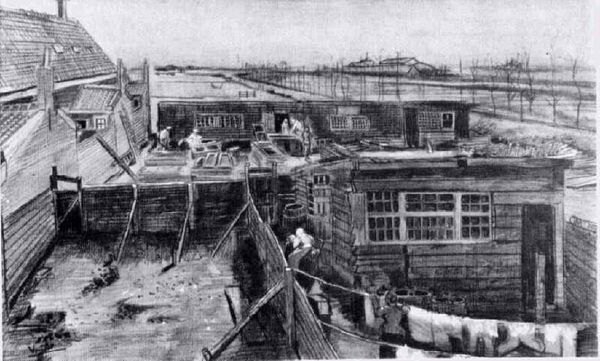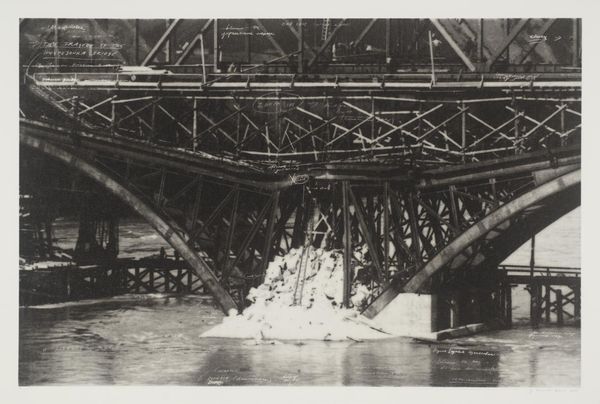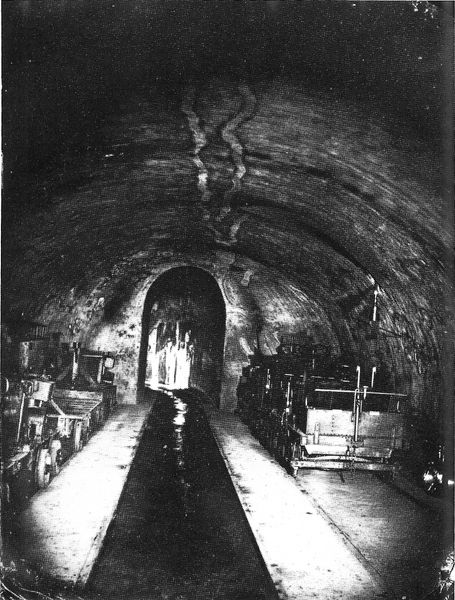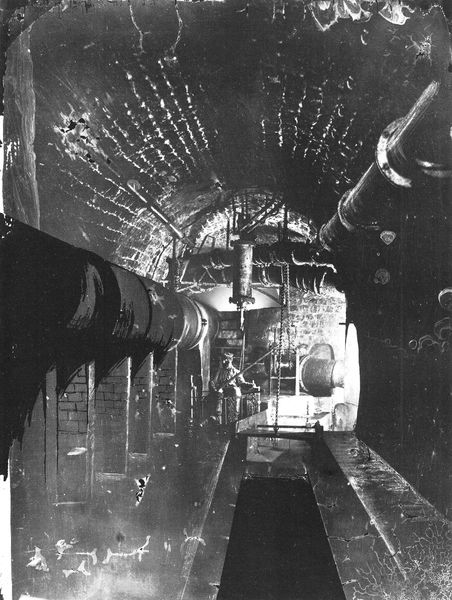
Dimensions: 17.8 x 25.3 cm
Copyright: Public domain
Editor: This is James Abbott McNeill Whistler’s etching, "The Limeburner," created in 1859. It’s quite detailed and shows a man in what seems like a dilapidated workshop. It's so textured, almost tactile. What strikes you about this piece? Curator: Look closely at the scene. Whistler directs our attention to the materiality of labour. The subject is posed within a space defined by wooden beams, ladders, and tools – the implements of the limeburner’s trade. The roughness of the etching underscores the roughness of the work itself. How do you think the choice of etching contributes to the understanding of the depicted labor? Editor: That makes me think about the difference between, say, a painting of the same scene versus this print. There's something almost industrial about the printmaking process itself, echoing the labor in the image. Do you think Whistler is commenting on industrialization at all? Curator: Possibly. But consider lime burning itself—it’s a very old industry. This image, in its deliberate focus on the processes of the limeburner's work through the marks and lines of the etching plate, could be a visual argument for the artistic merit found even in the humblest of trades, celebrating a kind of pre-industrial craftsmanship threatened by modern production. What might that mean for his status as an artist working in the age of industrial reproduction? Editor: So it's not just about the image, but also about elevating the status of labor through the very act of creating this print. It brings attention to both the subject and the means of production, really interesting! Curator: Exactly! This piece bridges what we typically see as “art” versus “craft,” using his own artistic labor to call attention to the labor of others. Editor: I never would have looked at it that way. Now I see a lot more depth in both the image and the technique!
Comments
No comments
Be the first to comment and join the conversation on the ultimate creative platform.
